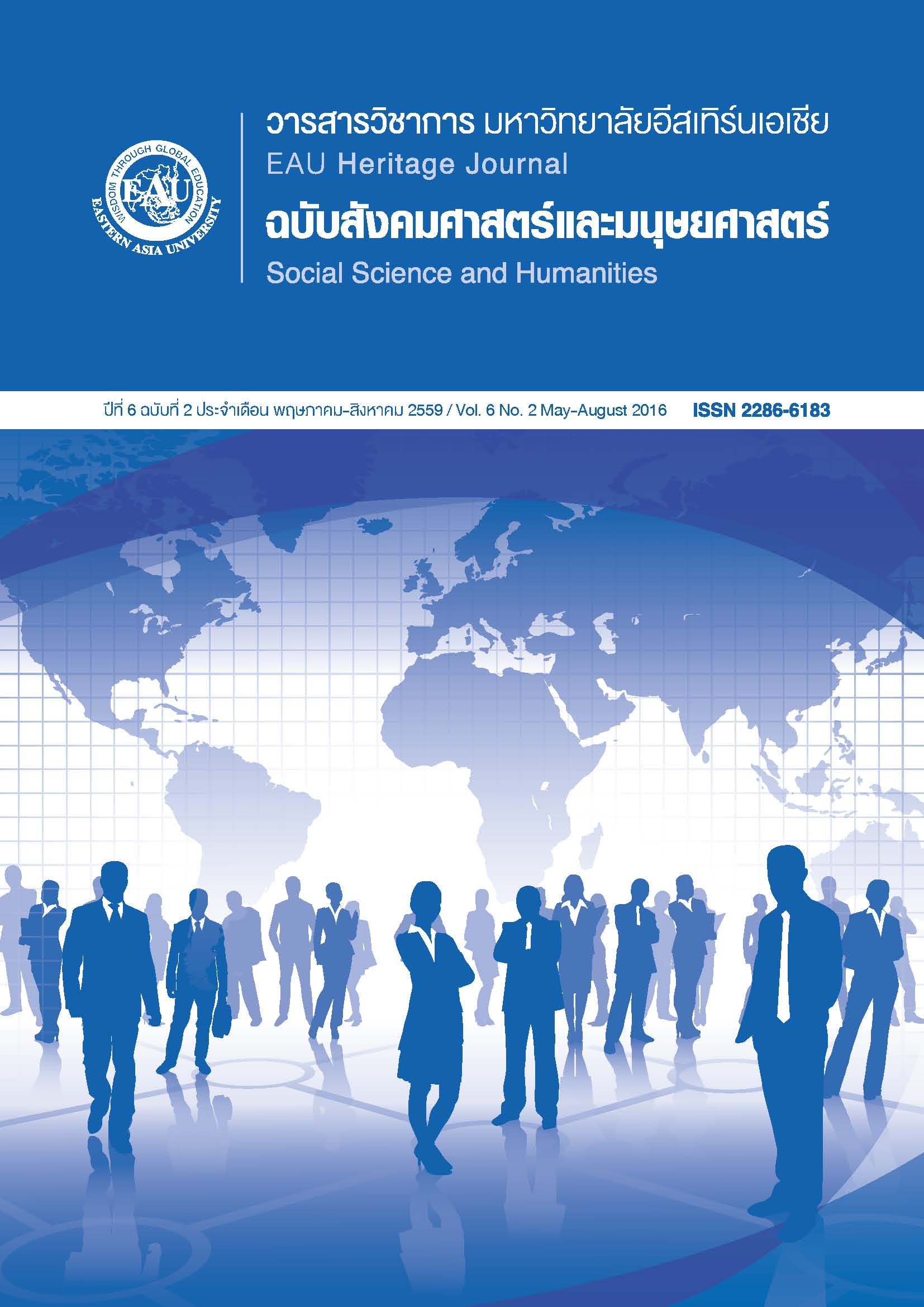กลยุทธ์การตลาดผสมผสานของอุตสาหกรรมอาหารแช่แข็งไทยสำหรับการส่งออกไปยังตลาดประชาคมเศรษฐกิจอาเซียน The Marketing Mix Strategies of Thai Frozen Foods Industry for Exportation to ASEAN Economic Community Market
Keywords:
marketing mix strategies, ASEAN economic community, environmental factors, key exportation performance indicatorsAbstract
The purposes of this research were to find out the marketing mix strategies of Thai frozen foods industry for exportation to ASEAN Economic Community market. The research was a mixed method, including quantitative and qualitative studies. The population was 3,105 persons from 423 companies who are the members of Thai Frozen Foods Association and name list of frozen foods exporters from Department of International Trade Promotion, Ministry of Commerce. The sample obtained by stratified sampling, simple sampling, and quota sampling of 873 persons. The research instruments were interviewed and questionnaire had been tested by validity and reliability. Descriptive statistics and inferential statistics such as frequency, means, standard deviation, percentage, skewness and kurtosis, confirmation factors analysis, path analysis and structural equation modeling. The findings found that the factor construct of the marketing mix strategies of Thai frozen foods industry for exportation to ASEAN Economic Community market consisted of environmental factors and marketing mix strategies which those factors affected to the achievement of frozen foods industry in Thailand for sales growth, incremental income and incremental new customers. It also found that environmental factors have effected both directly and indirectly to key exportation performance indicators of Thai frozen foods industry for exportation to ASEAN Economic Community market via marketing mix strategies and the finding model fitted with empirical data.References
Cooper, L. (2000) Strategic marketing planning for radically new products. Journal of marketing, 64(1), pp.1-15.
Dowling, G. (2002). Customer relationship management: In B2C markets, often less is more. California Management Review, 44( 3).
Ferrell, O. C., Hartline, M. D. & Lucas, G. H., Jr. (2002). Marketing strategy ( 2nd ed.). Mason: Thomson Learning/South-Western College Publishing.
Gee, R., Coates, G. & Nicholson, M. (2008). Understanding and profitably managing customer loyalty. Marketing Intelligence & Planning, 26(4), 359-374.
Gimenez, E V. (2005). Logistics-production, logistics-marketing and external integration: their impact on performance. International journal of operations & Production Management, 25(1), 20-38
Kantapipat, W. (2009). The determinants of successful export marketing strategy in Thai processed agricultural products, Ramkhamhaeng university, International Journal, 3(1).
Kotler, P. & Armstrong, G. (2011). Principles of marketing (14th ed.). New Jersey: Prentice Hall.
Kotler, P. & Keller, K. L. (2012). Marketing management (12th ed.). New Jersey: Prentice Hall
Lake, L. (2009). Developing your marketing mix. Retrieved September 4, 2009 Retrieved from http://marketing.about.com
Linnell, P. G. (2006). Customer satisfaction and loyalty - where product and service
quality hit the bottom-line! Journal of Customer Satisfaction.
Mohsen, F., Nawaz, M. M., Khan, M. S., Shaukat, Z., & Aslam, N. (2011). Impact of customer satisfaction on customer loyalty and intentions to switch: Evidence from banking sector of Pakistan, International. Journal of Business and Social Science, 2(16).
Perreault, Jr., W. D., & McCarthy, E. J. (2005). Basic marketing. Retrieved from University of Phoenix eBook Collection Database
The Chartered Institute of Marketing. (2014). Thailand’s frozen food export. Department of International Trade Promotion (DITP), Thailand, USA, November 20, 0214.
Scott, D. M. (2004). Buying & selling...but what about marketing?. E Content, 27(4), 48.
Retrieved September 5, 2009, from Academic Search Complete database.




